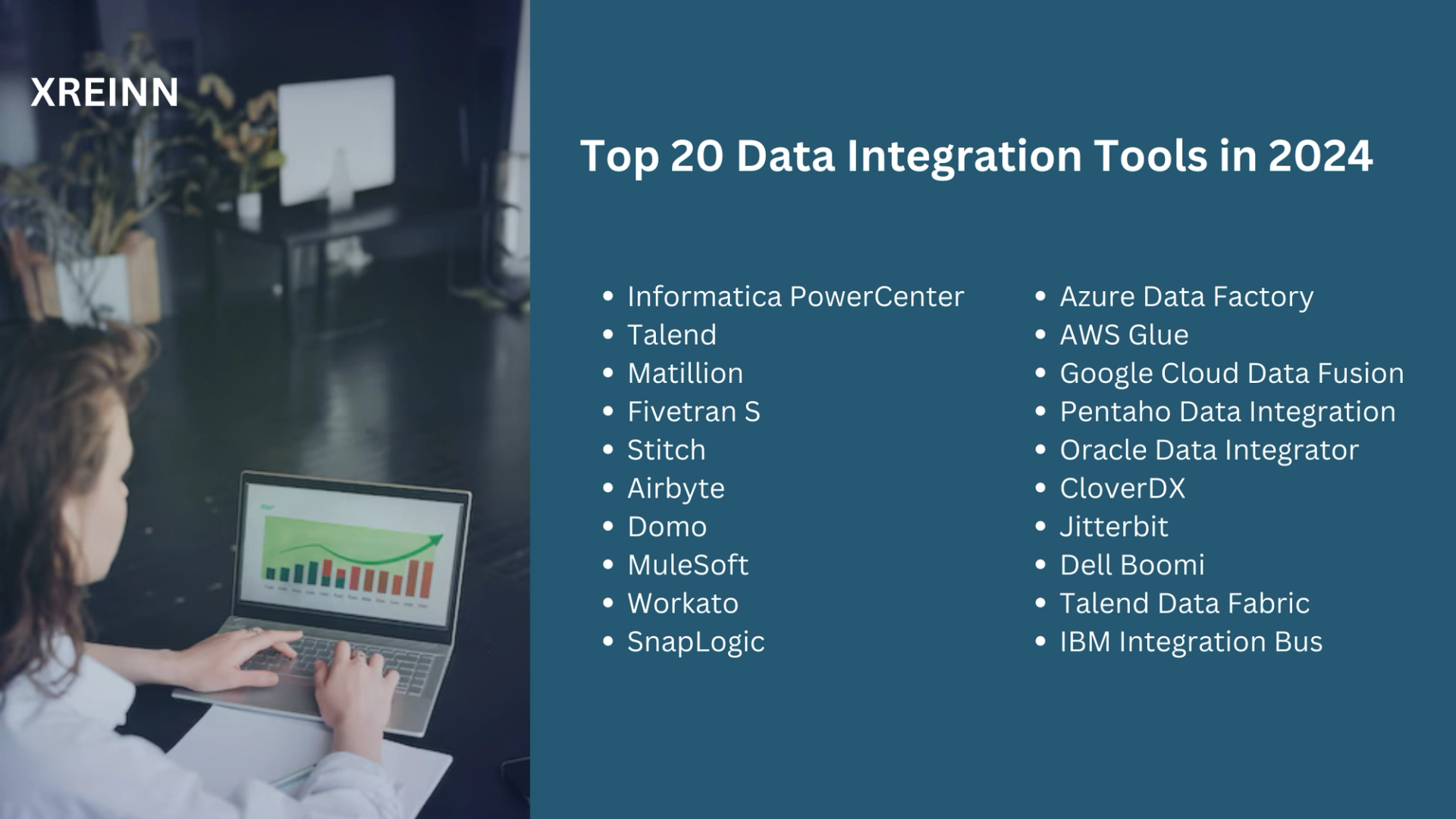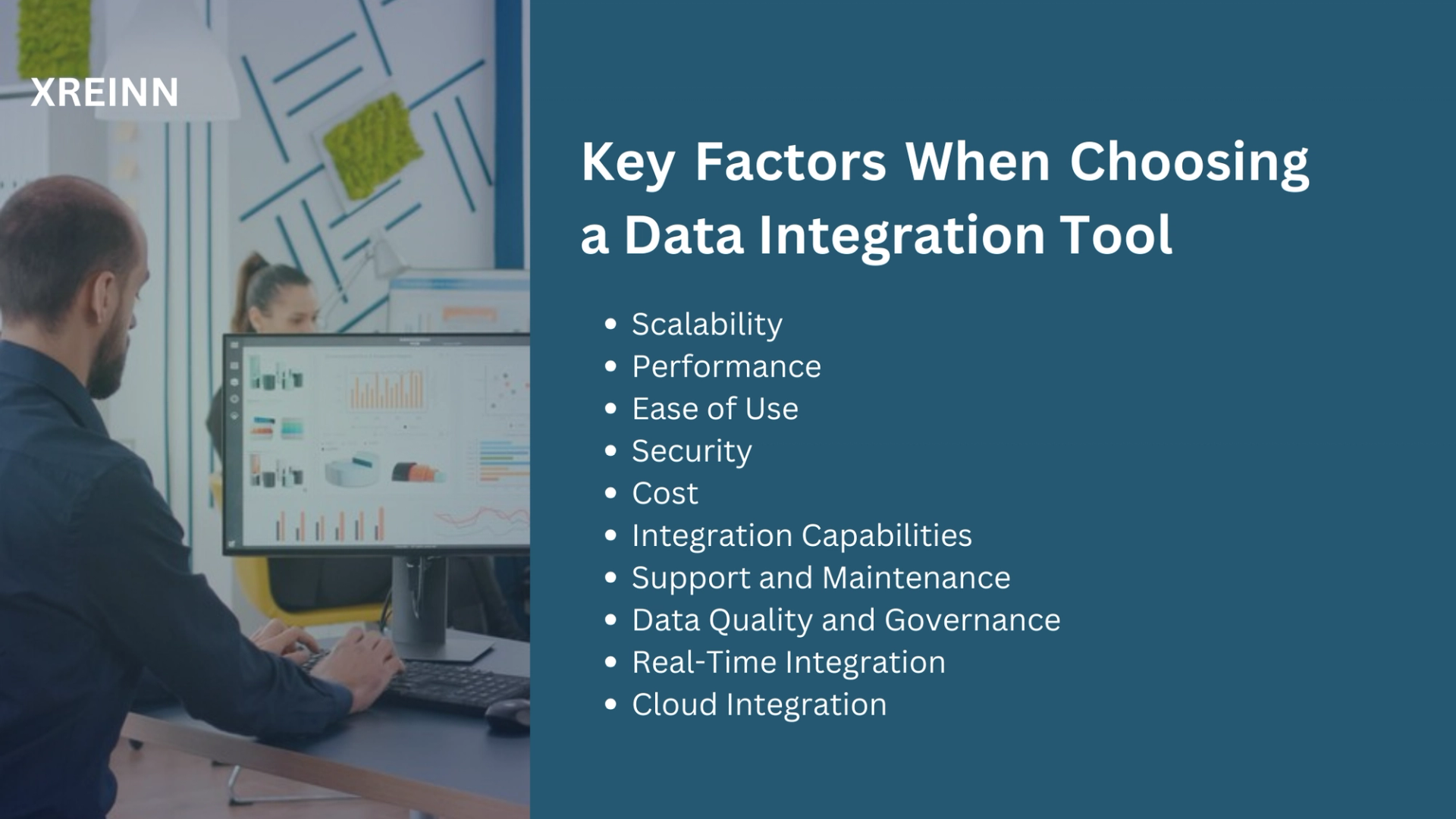Data Integration
Top 20 Data Integration Tools in 2024
Oct 28, 2024
As organizations grow, they collect large amounts of data from multiple sources such as applications, cloud platforms, and databases. This expansion makes it essential to consolidate information into a unified system for effective management and analysis.
Data integration tools play an important role in this process. It provides structured workflows to connect, cleanse, and transform data for effective analysis. With a variety of integration tools available, businesses can choose solutions that fit their specific data needs. This ensures reliable, real-time insights and streamlined operations.
In this article, we'll run through everything you need to know about data integration tools, types of integration tools, plus the best 20 data integration tools on the market in 2024.
What are Data Integration Tools?
Data integration tools are software solutions designed to consolidate data from multiple sources into a single, unified view. These tools streamline the process of extracting, transforming, and loading (ETL) data, making it accessible and consistent across various systems within an organization.
By automating data handling, integration tools reduce manual intervention, improve data quality, and facilitate seamless data flow between applications and platforms. They are essential for analytics, business intelligence, and real-time decision-making, and are used in sectors where accurate and efficient data access is critical.
Importance of Data Integration
Data integration is important as it merges data from various sources, providing organizations with a complete, real-time view that improves decision-making. It automates data handling, reducing manual errors and enhancing workflow efficiency.
Additionally, integration tools often clean and standardize data, ensuring consistent quality for accurate reporting. As businesses grow, scalable integration solutions easily handle increasing data volumes and sources, enabling companies to quickly identify trends, optimize processes, and stay competitive
Key Components of Data Integration
- Extraction: The process of retrieving data from source systems.
- Transformation: The process of converting data into a suitable format for analysis or storage. This may involve cleaning, filtering, and standardizing data.
- Loading: The process of transferring transformed data into a target system, such as a data warehouse or data lake.
Types of data integration tools
ETL (Extract, Transform, Load) Tools
ETL is a traditional approach to data integration. It involves extracting data from various sources, transforming it into a suitable format, and then loading it into a target system. This approach is well-suited for batch processing of large data volumes and is often used to integrate data from multiple sources into a centralized repository. Popular ETL tools include Informatica PowerCenter, Talend, and Pentaho Data Integration.
ELT (Extract, Load, Transform) Tools
ELT is a modern approach to data integration that reverses the traditional ETL process. In ELT, data is first extracted and loaded into a data warehouse or data lake, and then transformed as needed. This approach is particularly suitable for big data environments where data volumes are massive and the transformation process is complex. ELT tools are often used in conjunction with cloud-based data warehouses and data lakes. Popular ELT tools include AWS Glue, Azure Data Factory, and Google Cloud Data Fusion.
Data Integration Platforms
Data integration platforms are comprehensive solutions that offer a range of features, including ETL, data quality, and data governance. They provide a unified interface for managing data integration processes and often include features such as data profiling, data masking, and data lineage. Data integration platforms are well-suited for organizations that need to integrate data from multiple sources and manage complex data integration workflows. Popular data integration platforms include Talend Data Fabric, Informatica Cloud, and MuleSoft Anypoint Platform.
API Integration Tools
API integration tools facilitate the integration of data from APIs of various applications and services. They enable real-time data exchange and integration with cloud-based systems. API integration tools are often used to integrate data from SaaS applications, social media platforms, and other web-based services. Popular API integration tools include MuleSoft Anypoint Platform, Dell Boomi, and Workato.
Top 20 Data Integration Tools

1. Informatica PowerCenter
Informatica PowerCenter is an enterprise-grade ETL tool widely used for its extensive data integration capabilities, such as data cleansing, transformation, and data governance. Its graphical interface allows users to design and automate complex workflows, making it a preferred choice for organizations with high-volume data requirements and complex environments.
2. Talend
Talend is an open-source data integration platform that combines ETL, data quality, and API integration in one tool. With its wide support for cloud and on-premises data sources, Talend enables businesses to manage, cleanse, and transform data seamlessly. It also provides tools for data governance, ensuring data quality throughout the integration process
3. Matillion
Matillion is a cloud-native ETL tool optimized for cloud data warehouses such as Snowflake, Redshift, and BigQuery. Known for its user-friendly interface and fast setup, Matillion enables businesses to quickly build data pipelines and conduct transformations directly within their data warehouses, making it ideal for cloud-focused companies.
4. Fivetran
Fivetran provides fully automated data integration, focusing on minimizing manual intervention by automatically adjusting to schema changes. It connects to a wide range of data sources and loads data into cloud warehouses, supporting businesses in maintaining real-time analytics without significant engineering resources
5. Stitch
Stitch offers a cloud-based ETL solution focused on simplifying data integration. It supports a variety of data sources and integrates seamlessly with major data warehouses. Stitch is particularly valuable for smaller teams looking for a straightforward solution with scalability for growing data requirements
6. Airbyte
Airbyte is an open-source data integration tool designed for flexibility. It allows users to build and customize data connectors, making it an attractive choice for organizations that need unique data connections or want full control over their data pipelines
7. Domo
Domo combines business intelligence with data integration capabilities. It provides data visualization and analytics tools that help businesses make data-driven decisions. With support for multiple data sources, Domo enables end-to-end data analysis on a single platform.
8. MuleSoft
MuleSoft offers a comprehensive API integration platform that connects applications, data, and devices. Known for its extensive API management features, MuleSoft supports a wide variety of data integration needs and enables businesses to create secure, unified data systems across applications.
9. Workato
Workatois an automation platform with data integration capabilities, allowing users to connect applications and automate workflows without coding. With its pre-built workflows, Workato is suitable for companies seeking automation along with data integration.
10. SnapLogic
SnapLogics an integration platform as a service (iPaaS) that brings together ETL, API integration, and application integration. It provides a visual interface and AI-driven automation to design and manage data workflows, supporting a wide range of data sources and applications.
11. Azure Data Factory
Azure Data Factory is Microsoft’s cloud-based data integration service that allows for building, scheduling, and monitoring data pipelines. With support for hybrid and cloud environments, it is a versatile option for companies using the Microsoft ecosystem
12. AWS Glue
AWS Glueis a fully managed ETL service by Amazon, optimized for transforming, extracting, and loading data in the AWS ecosystem. It provides automatic schema discovery, making it easy for users to manage their data catalog, and is ideal for businesses leveraging AWS cloud services
13. Google Cloud Data Fusion
Google Cloud Data Fusion is a fully managed data integration service for building data pipelines on Google Cloud. Its graphical interface and support for various data sources enable organizations to quickly integrate and prepare data for analytics
14. Pentaho Data Integration
Pentaho, now a part of Hitachi Vantara, is an open-source ETL tool that combines data integration with analytics capabilities. It provides drag-and-drop functionality, advanced data transformations, and supports both cloud and on-premises data sources.
15. Oracle Data Integrator (ODI)
ODI is Oracle’s data integration platform, focusing on ELT (Extract, Load, Transform) for high-performance data movement and transformation. It integrates well with Oracle databases and applications, offering extensive data management features suited for Oracle-centric environments.
16. CloverDX
CloverDX offers a visual interface for building data pipelines and supporting complex data transformations. With a drag-and-drop functionality, it is designed for teams looking for flexibility in creating and managing data workflows without heavy coding.
17. Jitterbit
Jitterbit provides a low-code platform for API and application integration. It enables businesses to connect and synchronize data across multiple sources, making it useful for both cloud and on-premises integrations. Jitterbit is ideal for companies needing quick deployment and easy customization
18. Dell Boomi
Dell Boomi is a cloud-native iPaaS offering a broad range of integration capabilities, from data synchronization to API management. Known for its low-code environment, Boomi enables rapid integration and supports extensive connectors for various data sources.
19. Talend Data Fabric
Talend Data Fabricis a comprehensive, cloud-native integration platform that provides data governance, quality, and integration. With support for a wide array of data sources, Talend Data Fabric gives businesses a unified view of data, enhancing both accessibility and reliability
20. IBM Integration Bus
IBM Integration Bus (now part of IBM App Connect) is a robust integration platform with support for ETL, messaging, and API management. It is ideal for complex data environments, offering high reliability and scalability for businesses with advanced integration needs
Key Factors When Choosing a Data Integration Tool

Scalability
A data integration tool should be able to handle increasing data volumes and complexity without compromising performance. It should be able to scale horizontally or vertically to accommodate growth. Consider the tool's ability to handle large datasets, diverse data formats, and complex data transformations.
Performance
The tool should efficiently process and transform data to deliver timely insights. Factors to consider include processing speed, query optimization, and parallel processing capabilities. A high-performance tool can significantly reduce data integration time and improve overall system responsiveness.
Ease of Use
A user-friendly interface and intuitive workflow can significantly reduce the learning curve for both technical and non-technical users. A drag-and-drop interface, visual data mapping, and pre-built connectors can simplify the data integration process. A well-documented tool with ample online resources and community support can also enhance usability.
Security
Robust security features are essential to protect sensitive data during the integration process. The tool should offer data encryption, access controls, and auditing capabilities. It should also comply with industry standards and regulations, such as GDPR and HIPAA.
Cost
Consider the initial licensing costs, ongoing maintenance fees, and cloud infrastructure expenses. Evaluate the total cost of ownership, including training, support, and potential customization costs. Open-source tools may offer a cost-effective solution, but they may require additional development and maintenance efforts.
Integration Capabilities
The tool should be able to connect to a wide range of data sources, including databases, applications, cloud-based systems, and APIs. It should also support various data formats and protocols. A tool with strong integration capabilities can simplify complex data integration scenarios.
Support and Maintenance
Reliable technical support and regular updates are crucial for the long-term success of a data integration project. Consider the vendor's reputation, support SLA, and response time. Regular updates can ensure that the tool remains compatible with the latest technologies and addresses security vulnerabilities.
Data Quality and Governance
The tool should offer features for data cleansing, validation, and monitoring to ensure data accuracy and consistency. Data quality rules, data profiling, and data lineage capabilities can help identify and resolve data quality issues. Data governance features can help enforce data standards and policies.
Real-Time Integration
If your organization requires real-time data processing, the tool should support low-latency data ingestion and transformation. Real-time integration can enable timely decision-making and operational insights.
Cloud Integration
Consider the tool's ability to integrate with cloud-based data sources and platforms, such as AWS, Azure, and Google Cloud. Cloud integration can enhance scalability, flexibility, and cost-effectiveness.
Wrap up
Data integration tools play an important role in managing diverse data sources and ensuring efficient, real-time data access. From well-established platforms like Informatica and Talend to innovative tools like Airbyte and Hevo Data, these solutions offer scalable, flexible integration for cloud, on-premises, and hybrid environments.
Choosing the right tool requires considering factors like data volume, real-time capabilities, and ease of use. As businesses continue to rely on data-driven insights, these top tools provide the foundation for reliable analytics, effective decision-making, and overall operational efficiency.

Data Analytics
Jun 27, 2024Master key concepts in data analytics with practical tips to enhance decision-making and achieve success in your projects and professional growth

Data Analytics
Jul 01, 2024Learn the essential stages of the data analytics workflow to turn your data into valuable business insights and drive growth.

